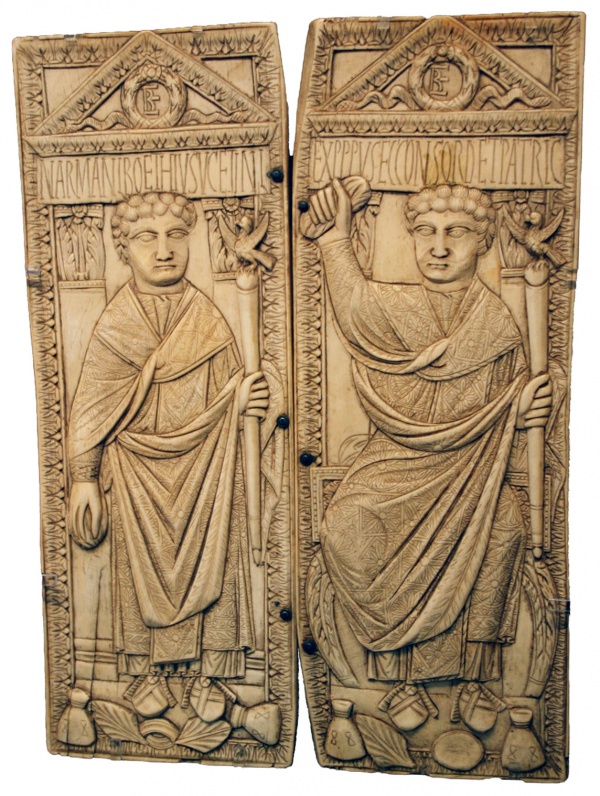Facts About Diptych of Boethius
The Diptych of Boethius is an enthralling artifact from the late fifth century AD. This remarkable ivory consular diptych, currently housed in the Museo di Santa Giulia in Brescia, was originally procured by Cardinal Angelo Maria Querini in the 18th century. By virtue of his will, it eventually became part of the Museo dell'Era Cristiana's collection.
Crafted by Roman artisans, this diptych was created to commemorate Manlius Boethius' second term as praefectus urbi (urban prefect) of Rome in 487. Diptychs of this nature were traditionally presented to friends and associates to celebrate significant milestones, such as assuming public office. Initially displayed in the Museo dell'Era Cristiana, the diptych was relocated in 1998 to the "Collectables and Applied Arts" collection at the Museo di Santa Giulia.
The diptych’s panels are embellished with images depicting the consul seated on a throne, clothed in an elaborate tunic. These scenes are set against an architectural backdrop featuring Corinthian pilasters, accompanied by a dedicatory inscription that provides the date and context of the event it commemorates. The artistry is exceptionally detailed, achieved through the use of a burin, enabling varying depths of relief. This meticulous workmanship vividly captures the sceptres, Boethius himself, the architectural elements, and even the intricate embroidery on the tunics.

 France
France